Iran Power Grid Under Strain As Consumption Leaps By 20%
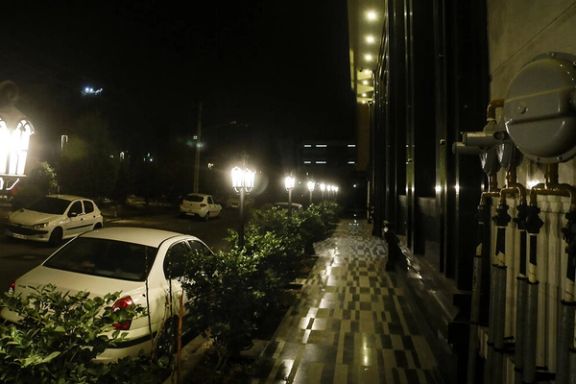
Iran’s electricity usage has leapt by 20% in a year – increasing strain on a national power grid already struggling to meet demand.

Iran’s electricity usage has leapt by 20% in a year – increasing strain on a national power grid already struggling to meet demand.
The latest figures of nearly 55 thousand megawatts on Saturday are a huge rise on May last year.
While peak electricity consumption is usually expected to start in mid-June each year, rising temperatures have led to an early surge in the use of air conditioning equipment, according to Tasnim news agency.
Consumption during the same period last year was 45,840 megawatts, added the report.
The increase will put further strain on the country's power grid. Iran's electricity sector is in dire need of significant investment, and the country has been struggling to attract foreign investment in recent years.
Power plant capacity and fuel supply are both inadequate to meet demand, and blackouts regularly happen in summer. Even so, Iran exports electricity to Iraq.
Iran has failed to realize its annual electricity growth plan for several years in a row, while consumption continues to grow, in part driven by extremely low prices. Government funding to the energy sector of up to $60 billion a year effectively provides an indirect subsidy to consumers and businesses fuelling this demand.
The country needs at least 5 to 7 percent electricity generation growth annually to address the increase in domestic demand.
Iran on average has 300 sunny days annually but has yet to take advantage of the opportunity for solar power because of the failure to develop the renewable energy sector. Wind and solar power generation have only 0.5% share of total power generated domestically.

A recent scandal over Iranian lawmakers receiving cheap SUVs as bribe has deepened friction between the parliament speaker and the ultra-hardliner Paydari group.
Khabar Online, a news website close to the former moderate-conservative speaker of parliament, Ali Larijani, wrote Saturday that the scandal has turned into an excuse for the two major groups of hardliners in the parliament -- supporters of Speaker Mohammad-Bagher Ghalibaf and Paydari Front lawmakers – to settle political accounts.
In the past few days, Paydari Front lawmakers such as Morteza Agha-Tehrani have been assailing Ghalibaf who describes himself as a neo-conservative. The Speaker says he had known about the bribery and stopped it, while Agha-Tehrani accuses him of doing nothing to stop it and failing to offer convincing explanations since the news broke out last week.
Ghalibaf’s supporters and Paydari, which seeks the establishment of a traditional Islamic government, have also been threatening each other of revelations about other corruption cases.
“Agha-Tehrani’s interview displayed that your group is not after transparency,” pro-Ghalibaf lawmaker Mojtaba Tavangar wrote in a letter to Paydari Party secretary general, Sadegh Mahsouli, Friday and alleged that some Paydari lawmakers had also been among the recipients of the SUVs.
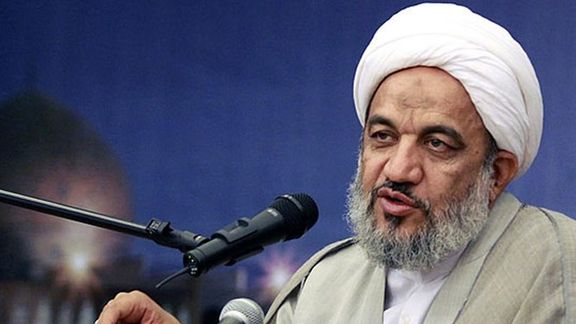
Over seventy SUVs were offered to the lawmakers at a lower price by the ministry of industry ahead of lawmakers’ discussion of a motion in December last year to impeach former minister of industry, Reza Fatemi-Amin for his “inadequate performance” including failure to control rising prices for domestically produced vehicles, their low quality, preventing competitive imports, and corruption in the industry.
After the impeachment drive failed, lawmakers planned another motion in April, which eventually succeeded.
Ahmad Alirezabeigi, the lawmaker who blew the whistle two days before the the second impeachment, claims he only meant to combat corruption and had no hidden agenda when he disclosed the bribery by, or on behalf of the minister.

“Some people gain privileges on various excuses to compromise and undermine the supervisory duty of the parliament,” he said Wednesday while calling such bribery a “tradition in the parliament” to prevent impeachments.
“I have nothing to do with the opportunism [of others] which is related to the elections,” he told Khabar Online, adding that “the two groups of lawmakers have waged a war over power to get more seats [for their respective factions] in the upcoming elections.”
“The speaker must transparently announce what measures he took against the unlawful payment to some [lawmakers] if he claims that he found out beforehand and stopped it. What measures were taken against the offenders? To which court were they referred to?” he asked.
In recent years car imports have been largely banned due to the shortage of hard currency. This has increased demand for domestically produced vehicles purchasing of which requires signing up and paying reservation fees. There are often long waiting lists due to the high demand in the market.
Fatemi-Amin was the first minister in President Ebrahim Raisi’s cabinet to be impeached. After initial denials by him and other officials, he was eventually sacked by the parliament on April 30.
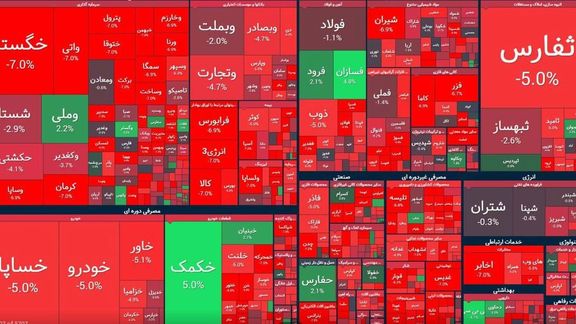
Tehran's stock exchange indices fell for the fifth consecutive day on Saturday amid a five-year economic crisis, with 50-percent annual inflation and a battered currency.
The main index decreased nearly 2.8% and more than 80% of shares experienced a fall in price.
According to official Tehran stock exchange reports, in today's transactions, natural persons withdrew about 38,000 billion Rials (more than 73 million dollars) from Tehran stock market, so that the total withdrawal of money by natural persons in the past five days, reached approximately 168,000 billion rials (323 million dollars).
Considering the current exchange rate of the US dollar in Tehran’s open market, the stock Exchange has lost 27 billion dollars of its value during this declining period.
The fall represents a ten-percent decline in the official value of all shares in the market, but most companies are directly or indirectly owned by state entities, and it is hard to put a clear value on assets.

Although the fall is not dangerously high by international standards, Iran’s stock market is controlled by the government and investors fear possible machinations in inflating and deflating the market.
The stock market decline is the latest negative economic news for the government of President Ebrahim Raisi, who is widely criticized as inefficient and incapable to deal with multiple problems.
However, the main trigger for the overall economic crisis was the move by the United States to withdraw from the JCPOA nuclear accord in 2018 and impose crippling sanctions on Iran’s oil exports and international banking.
The government, which is highly dependent on oil revenues, now suffers from an acute shortage of foreign currencies needed for food and raw material imports. The national currency reserves estimated to have been around $150 billion were mostly spent since 2018. This has led to a 12-fold fall in the value of the rial, fueling more inflation.
Economists expect hyper-inflation in coming months as the country experiences serious political instability following months of anti-government protests.
In July 2020, Tehran’s stock market fell by more than 30 percent in about one week and some shares fell by as much as 50 percent, wiping out the savings of many small investors who had believed government promises of a safe stock market.
Some observers said at the time that government entities had inflated the stock market and ripped large profits before its sudden fall. The memory of the 2020 crisis has remained strong among investors who become jittery at any sudden downturn.
Many economic analysts believe that government manipulation also added to the crisis, which has led to negative fundamental analyses of market shares.
Fall in steel producers’ shares, as well as mining companies contributed most to the decline in the past five trading sessions.
The production of steel and petrochemicals, the main non-crude exports, have suffered declines in the past year due to a shortage of natural gas, a vital energy source for these industries. Although Iran has the second largest natural gas reserves in the world, its output is declining due to lack of investments and Western technology.
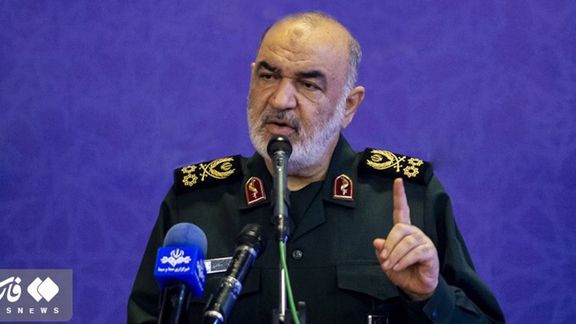
Iran’s Revolutionary Guard (IRGC) commander Hossein Salami was quoted as saying on Saturday that Israel’s destruction is not too far away.
Salami made the remark during a meeting with the family of Hassan Tehrani Moghaddam, an Iranian missile development officer who died in 2011 in a large explosion at a test site. Although Iran denied that the explosion was the result of a sabotage operation, some Western sources later claimed that Israeli intelligence was involved.
The IRGC commander referred to Moghaddam’s tombstone where it says, “Here is interned a man who wanted to destroy Israel,” and said, “Today witnessing the decline of enemies, especially the Zionist usurpers and child-killers,” Moghaddam’s dream will soon come true.
Iranian officials, especially IRGC commanders have recently become much more vociferous in their attacks against Israel after a Chinese brokered agreement with Saudi Arabia to restore diplomatic relations. The agreement is seen in Tehran as a defeat for the United States and an end to Iran’s regional isolation.
Attacks and counterattacks between Israel and Palestinian militant groups flared up in early April and again this week, while the Iranian regime began openly saying that Israel’s destruction is imminent.
Other IRGC officers on Saturday spoke about progress in weapons development. Deputy commander of IRGC’s aerospace force, Gen. Majid Mousavi announced that the flight time of Islamic Republic’s drones has reached 24 hours.
Mousavi announced that Israel’s nuclear reactor is a legitimate target for Iran’s increasingly accurate missiles and drones.
Iran has supplied kamikaze drones to Russia that have been used extensively against Ukrainian civilian targets.

Temperatures are rising at double the average global rate in Iran – one of the world’s top emitters of greenhouse gases.
The head of Iran’s Meteorological Organization, Sahar Tajbakhsh, revealed the alarming increase on Saturday, adding that rainfall has taken a worrying decline.
Speaking to ISNA, she attributed the higher-than-average climate change to Iran’s geography, such that its north and south are located in mid-latitudes and sub-tropical latitudes respectively.
She said: “The country's annual rainfall patterns have shown a decreasing trend in the last five decades.”
Looking back over the past 30 years, she observed: “This trend has unfortunately led to irreparable environmental and economic-social consequences.”
According to research published by The Lancet journal in April, currently, the number of “deaths due to global warming in the Middle East is 2·1 per 100,000 people”. However, the region “will have experienced substantial warming by the 2060s with the potential to reach the annual heat-related deaths to 123·4 per 100,000 people”.
In Iran’s case, this number is currently 11 deaths per 100,000 people, which is five times the average of the Middle East, but it will reach 423 in the next four decades.
According to the report, the Middle East is one of the most vulnerable parts of the world to global warming and climate change.
The report stated that the number of annual deaths due to global warming in Iran is around 1,703 people meaning six times more than that of Saudi Arabia.
The most important cause of global warming is the emission of greenhouse gases. International statistics, including those of the International Energy Agency and the Global Carbon Project, show that Iran has the highest emission of greenhouse gases in the Middle East and is ranked sixth globally. The situation is unlikely to change with the Islamic Republic mired in economic crisis and failing to invest in renewable energy.
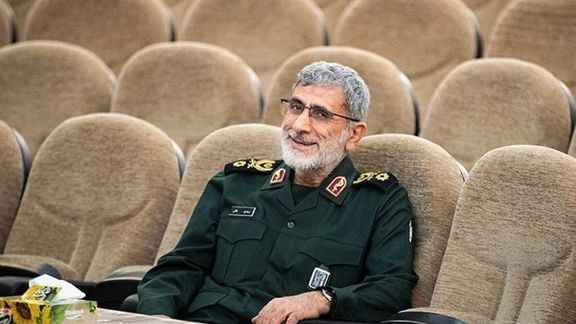
Commander of Iran’s extra-territorial Quds Force, Esmail Qaani praised “Islamic resistance” forces and vowed to support “Palestinian heroes” in a speech on Friday.
Qaani took credit that Palestinian militants are conducting “30 operations daily” against Israel and emphasized that “This is the result of the resistance front and global Islamic mobilization.”
‘Resistance’ front is the Iranian regime’s jargon referring to its regional allies, such as Syria, and militant groups being financed and supported by Tehran, such as the Lebanese Hezbollah and Palestinian groups Hamas and Islamic Jihad.
Large-scale Palestinian attacks against Israel took place in early April, as Iranian officials triumphantly claimed that the end of the Jewish state was near. After a lull fighting resumed earlier this week when Israel killed several Islamic Jihad leaders in a targeted air strike. Although Hamas, the largest Palestinian group did not enter the fighting this time, Islamic Jihad has fired hundreds of rockets and Israel has continued air strikes at the group.
Last week, Qaani claimed that Iran has humiliated Israel by organizing the “Islamic resistance” and said, At this point, Israel has reached a level of humiliation that it has surrounded itself with barbed wire and radars to prevent infiltration.”
But in his Friday speech in the religious city of Mashhad Qaani went farther and said that Iran has organized “a global network of resistance,” to defend Muslims and their honor.
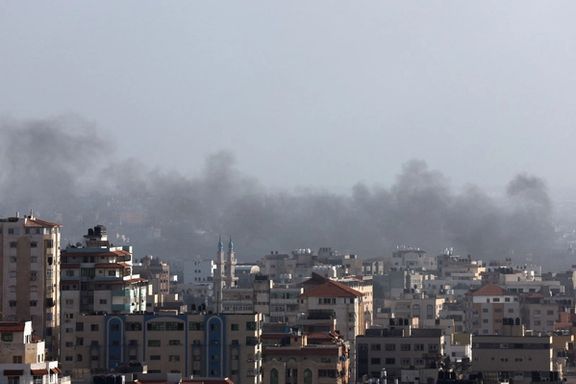
The Iranian regime as a Shiite Muslim political force has limited appeal with Sunni Muslims and its reach is mainly among Shiites in Middle Eastern countries, such as Iraq and Lebanon. However, it directs billions of dollars a year to finance an array of militia forces and their political networks. For example, it has spent at least $50 billion to support Bashar al-Assad’s regime in Syria during 12 years of civil war.
Qaani’s speech was on the 10thanniversary of the Fatemiyoun Brigade, an Afghan force that Iran organized in 2013 to fight in Syria. Unconfirmed reports indicate that more than 2,000 Afghans were killed during battles in Syria in 2010s.
The Quds commander lavishly praised the founder of the Fatemiyoun, Alireza Tavassoli, known as Abu Hamed, who was killed near Deraa in Syria in February 2015 in a battle with Assad’s opponents. He was a close associate of Qassem Soleimani, the former Quds commander who was killed in a targeted US air strike in Baghdad in January 2020.
Abu Hamed, who was a Shiite Muslim, was born in Afghanistan in 1962 and fought against the Soviets but fled and settled in Iran in the mid-1980s, where he received religious education and then was recruited to establish the Fatemiyoun Brigade.
“The resistance front has grown from a seed and a young plant into an extensive axis that connects the various points of the resistance forces across the world,” Qaani said, praising what his predecessor Soleimani spent nearly 20 years organizing.
He went on to say that Iran’s revolutionary government in the 1980s and later Supreme Leader Ali Khamenei played the main role in launching the “resistance front,” that today even enemies admit decides the outcome of battles. He claimed that because of Iran’s leadership, the Hezbollah in Lebanon and Houthis in Yemen are ready to help the Palestinians.